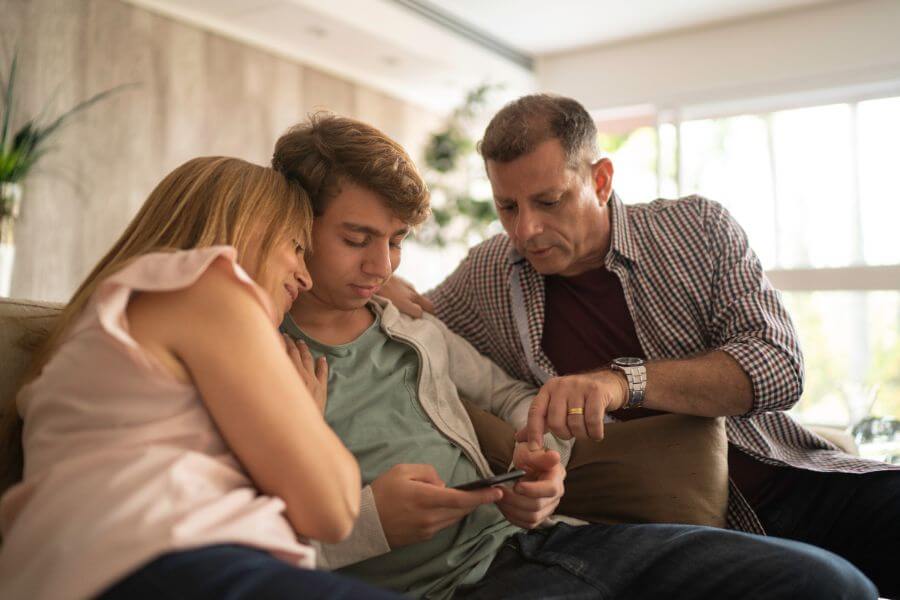Crucial conversations are high-stakes discussions that impact everyone, requiring a safe environment to encourage open dialogue and positive outcomes. In this article, we explore the importance of safe environments for crucial conversations, including the role of mutual purpose, mutual respect, and setting the right tone. We also provide practical tips for creating a safe space and offer strategies to overcome common challenges.
Creating a Safe Environment for Crucial Conversations
Understanding Mutual Purpose in Crucial Conversations

Mutual purpose is a key element in creating a safe environment for crucial conversations. It involves working towards a shared outcome in the conversation, where both parties feel heard and valued. When there is a common goal or objective, it becomes easier to create a safe space for dialogue. Mutual purpose helps build trust and ensures that the conversation is not driven by personal agendas or hidden motives.
To establish mutual purpose, you must first focus on the bigger picture and the collective benefits. By emphasizing shared goals and objectives, people align their interests and work collaboratively towards finding solutions. This requires active listening, empathy, and a willingness to consider multiple perspectives. When people feel valued and guided by a common purpose, they engage in a constructive and safe dialogue.
The Role of Mutual Respect in Creating a Safe Space
Mutual respect is another important part of creating a safe environment for crucial conversations. Valuing each other as human beings and focusing on our similarities is important for fostering respect. As a result, people open up, express their thoughts, and actively participate in the conversation.
Respect manifests through actively listening to others, acknowledging their viewpoints, and treating them with dignity. You must create an atmosphere where everyone feels safe to voice their perspectives, even if they differ from the majority. By promoting a culture of respect, individuals engage in a healthy and constructive dialogue because they feel free from judgment or personal attacks. In other words, they feel safe.
Setting the Right Tone for Open Dialogue in Crucial Conversations
The tone of the conversation sets the stage for how individuals engage and interact with each other. Naturally, with a positive and non-threatening atmosphere, people feel safe to express their thoughts, concerns, and opinions.
One way to set the right tone is by starting the conversation with a positive intent. Clearly communicate the purpose of the conversation and emphasize that the goal is finding a mutually beneficial outcome. This helps create a sense of psychological safety, where individuals feel comfortable sharing their perspectives without fear of judgment or retribution.
Additionally, using inclusive and non-confrontational language contributes to a safe environment. For example, avoid using accusatory or inflammatory statements, and instead, focus on using “I” statements to express your thoughts and feelings. When you use a respectful and empathetic tone, it’s a safe space where everyone feels heard.
3 Tips for Creating a Safe Environment for Crucial Conversations

Creating a safe environment for crucial conversations requires intentional effort and focus. Here are three practical tips to help you foster a safe space for open dialogue:
Tip 1: Establishing Trust and Psychological Safety
Trust is the foundation of any safe environment. Building trust involves being reliable, consistent, and honest in your interactions. Demonstrate trustworthiness by following through on commitments, being transparent, and respecting confidentiality. Additionally, foster psychological safety by encouraging individuals to speak up without fear of negative consequences. Further, create an atmosphere where mistakes are viewed as learning opportunities and where individuals are encouraged to take risks and share their authentic thoughts.
Tip 2: Noticing When Safety is at Risk and Addressing It
First, you must learn the signs that safety is at risk during crucial conversations. These signs include defensive body language, a lack of participation, or a decrease in trust and openness. When you notice these signs, address them immediately to prevent the conversation from derailing. Encourage everyone to share their concerns or discomfort and actively listen to their perspectives. By addressing safety concerns proactively, you maintain a safe environment and keep the conversation on track.
Tip 3: Speaking Honestly Without Offending
Speaking honestly without offending is a delicate balance to strike in crucial conversations. It is important to express your thoughts and opinions openly and honestly while considering the impact of your words on others. Choose your words carefully, focusing on the issue at hand rather than attacking the individual. Use neutral and non-judgmental language, and be open to receiving feedback and differing viewpoints. By promoting a culture of open and honest communication, everyone engages in meaningful dialogue without causing harm or offense.
Overcoming Common Challenges in Creating a Safe Environment

Fostering a safe environment for crucial conversations is challenging, but with the right strategies, it’s achievable. Here are a few common challenges and ways to overcome them:
Challenge 1: Emotions Running High
Emotions innately run high during crucial conversations, which makes it difficult to maintain a safe environment. To overcome this, practice emotional intelligence and self-awareness. Take a moment to recognize and regulate your emotions before responding. Encourage others to do the same and create space for emotions to be expressed in a constructive manner. By acknowledging and validating emotions, people work through them and continue the conversation in a safe and productive manner.
Challenge 2: Power Dynamics
Power dynamics significantly impact the safety of a conversation. When one party holds more power or authority, individuals feel hesitant to express their true thoughts and opinions. To address this, create an equal playing field where everyone’s voice is valued and respected. Actively seek input from everyone and ensure that the conversation is inclusive and collaborative. By minimizing power differentials, individuals feel good about contributing in a safe environment.
Challenge 3: Lack of Trust
A lack of trust hinders a crucial conversation. To build trust, prioritize relationship-building and learning about each other. Also, share personal experiences, show vulnerability, and actively listen to others. Establishing a foundation of trust takes time and effort, but it’s crucial for creating a safe space.
The Power of Safe Spaces for Productive Crucial Conversations
A safe environment for crucial conversations is key for the best productivity and healthy relationships. Through awareness of mutual purpose, mutual respect, and setting the right tone, those present naturally create a safe space. Also, a safe environment occurs through establishing trust, addressing safety concerns, and speaking honestly without offending. Of course, there are challenges to overcome, such as high emotions, power dynamics, and lack of trust. However, with the right strategies, everyone achieves meaningful and impactful conversations. By embracing the power of safe spaces, people and organizations unlock their potential for growth, collaboration, and positive change.
Suggested Reading or Listening


Conclusion
It is our wish that you find this post enlightening and helpful. If you have any questions or suggestions, we love to hear from you in the comments below. Also, kindly accept our invitation to join our group on Facebook to surround yourself with kindred spirits and post your encouraging messages.









































